Praying holy women, scenes of knightly duels, dignified portraits of kings ... Or maybe rabbits with axes, naked bishops and arrows aimed at the buttocks? We will prove to you that the imaginations of medieval miniaturists knew no bounds!
Writing and decorating books in the Middle Ages required many hours of patient, careful and precise work. No wonder that the monks, who were laboring over the parchments day after day, allowed themselves to scratch at the margins of the caricature of their superior. Miniaturists also let their imagination run wild, sketching grotesque monsters and funny scenes on missal pages. We guarantee that after viewing our gallery of strange, scary, funny and sometimes simply vulgar illustrations, you will change your understanding of medieval culture!
20. Relax, it's just a deer in a rabbit hole
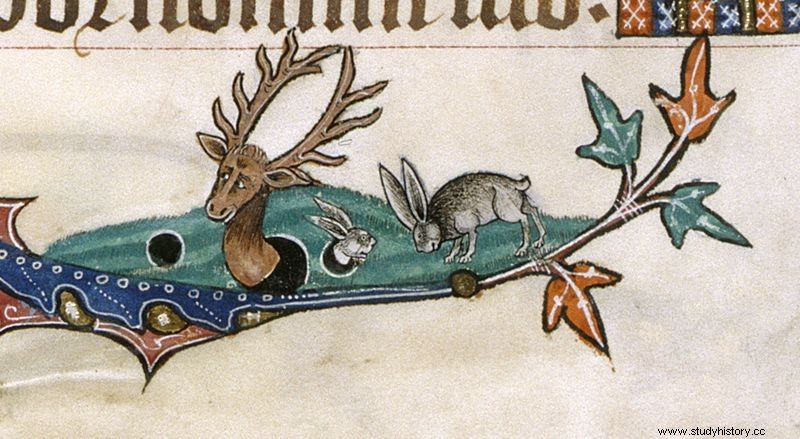
They said I could be whatever I wanted so I became a rabbit. The Gorleston Psalter, circa 1310
The Psalter containing the above illustration was written around 1310. It is known to have been made for a person associated with St. Andrew's Church in the English town of Gorleston, but the owner's identity remains a mystery. Scientists suspect it may have been John de Warenne, Earl of Surrey in 1286-1347. One of the proofs of this is huge numbers of rabbits running through the decorative motifs of the psalter. Sometimes they are presented in their burrows, which is said to be a direct reference to the creator's name (English word warren stands for a rabbit hole). A glance at the above illustration, however, raises the question:why is there ... a cuckold next to the graphic representation of the owner's name?
19. Have you already sawed through your books?
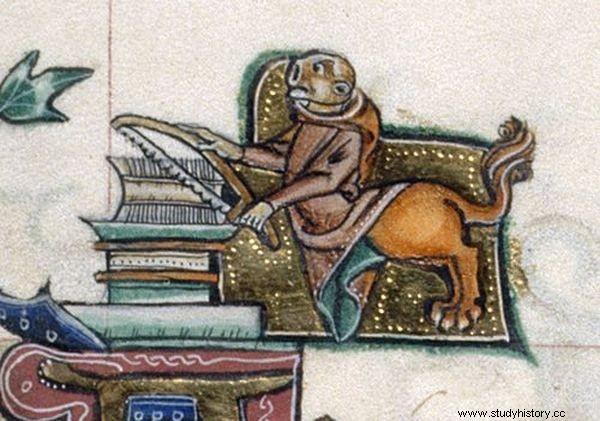
The next time you scroll through some content, think about sawing it through. The Gorleston Psalter, circa 1310
Another detail of the ornaments of the Gorleston Psalter. Similar scenes, depicting grotesque characters, hybrid monsters and elements selected on the basis of contrast, are referred to as droleries (from the French word "drôle", meaning funny, playful). While there are several theories about the function and interpretation of similar motifs, to this day, we are still unsure how to understand the "monkey disguised as a monk sawing a pile of books."
18. I'm not going to split myself up
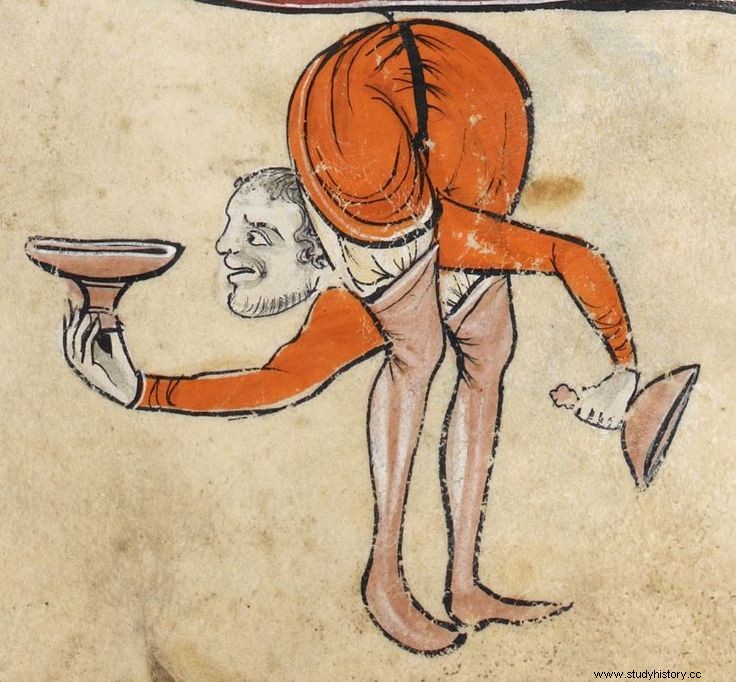
What to get? ... The Rutland Psalter, circa 1260
“What a book! My eyes!" The English writer and painter William Morris would shout in delight at the sight of the Rutland Psalter. The book is named after the Dukes of Rutland who owned the book from at least 1825. Apparently, the artist was so infatuated with her that when he became seriously ill at the end of his life, a friend brought it to him to cheer him up. No wonder - the work does not lack grotesque scenes similar to the one presented above. It's hard not to smile while browsing the pages…
17. You sin no more
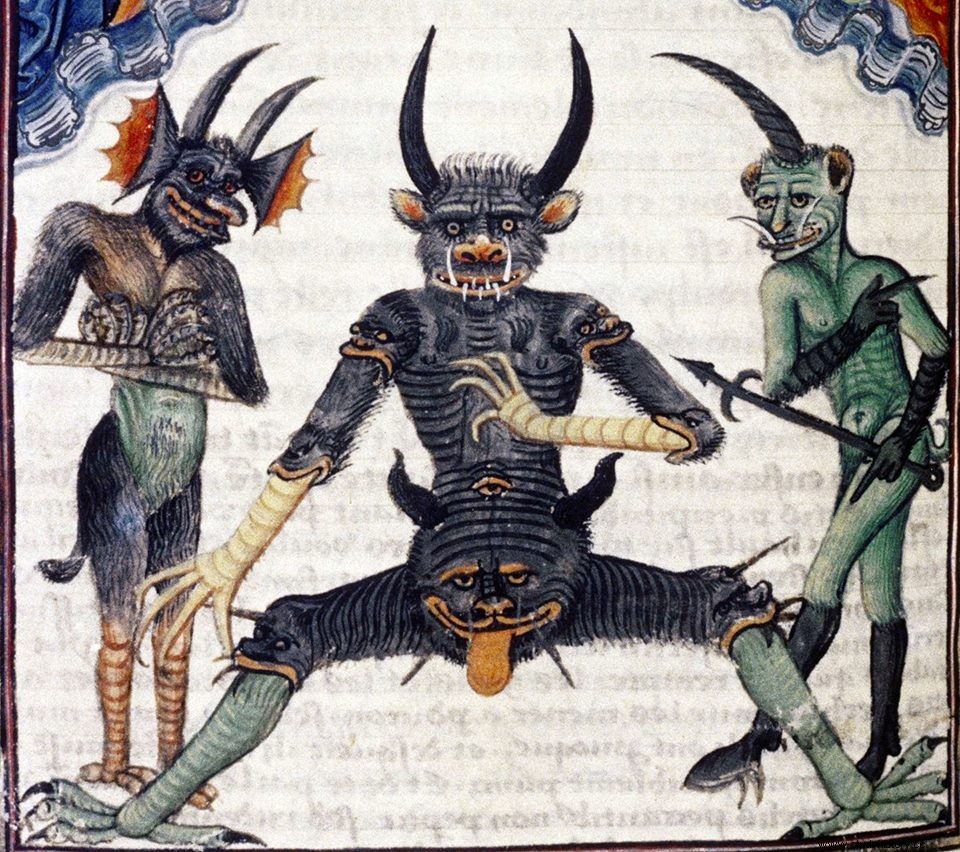
Someone always has to show the tongue. Livre de la Vigne nostre Seigneur, France, ca.1450-1470, Bodleian Library collection.
A grim creature with horns and hooves is not enough to impress a man from the 15th century. After all, he had seen many horrors of wars, plagues and public executions. This does not mean, however, that the authors of the manuscripts have stopped trying to cause terror among their readers. Livre de la Vigne nostre Seigneur stands out as a true catalog of horrors that can await impure souls in Hell. The image of Lucifer in the above miniature refers to other representations of the devil in medieval art. Hell's messengers were often "gifted" with extra heads and animal body parts. And the other mouth, located at the creature's anus, was said to be used to spit out unfortunate sinners.
16. Welcome to the other side!
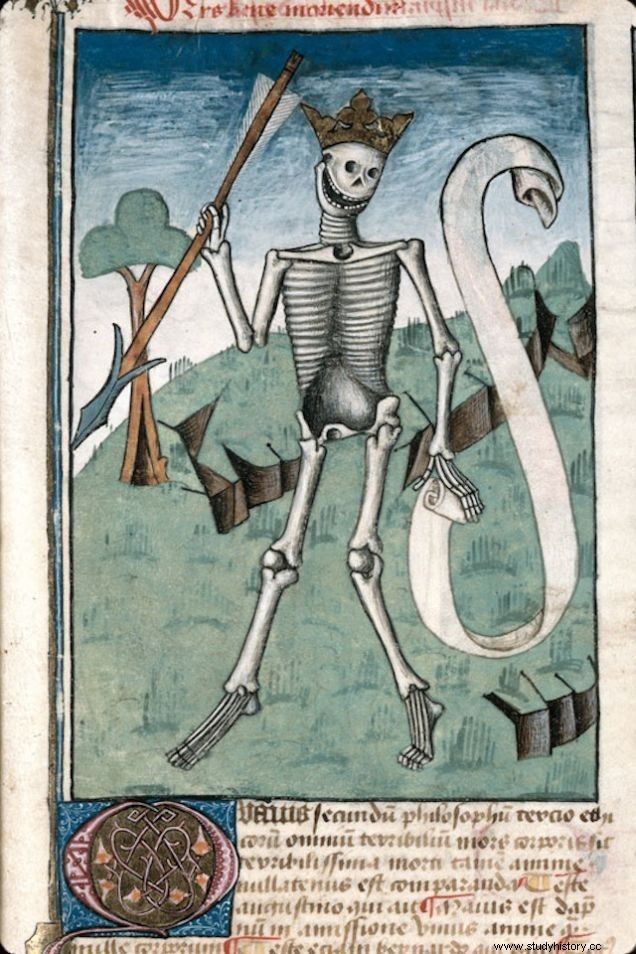
Smile, the list of your sins is not that long after all. "Ars bene moriendi", France, around 1470 - 1480
In the 14th century, textbooks on the "art of dying well", or "ars bene moriendi", became popular. They contained practical advice for a dying person whose soul was fought for by the emissaries of hell and heaven on his deathbed. This struggle was called psychomachia . According to the authors of these learned books, there were ways to tip the tide of victory to the more desired side.
15. You can lose your head
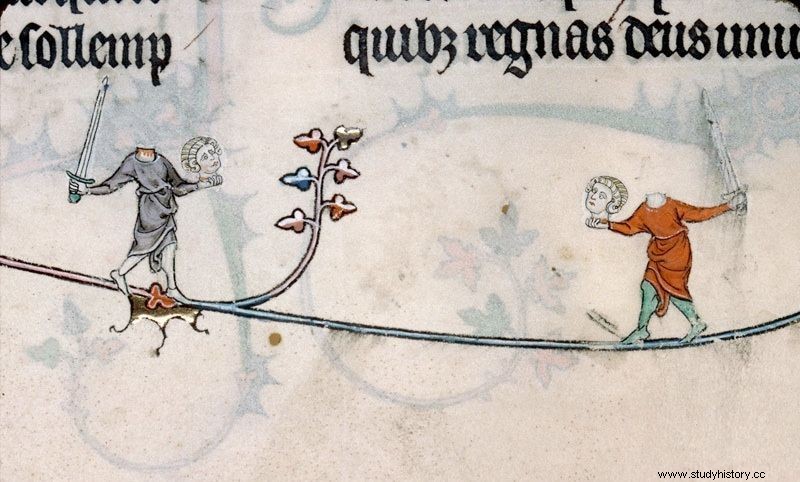
Two heads… Breviary of Renauda de Bar, France, c. 1302-1303
Many grotesque figures appear in the Renaud de Bar breviary, also known as the Verdun breviary. They duel with each other on decorative twigs surrounding the text. There are lions with the heads of bearded old men, slug men or lion-riding rabbits and flying dogs.
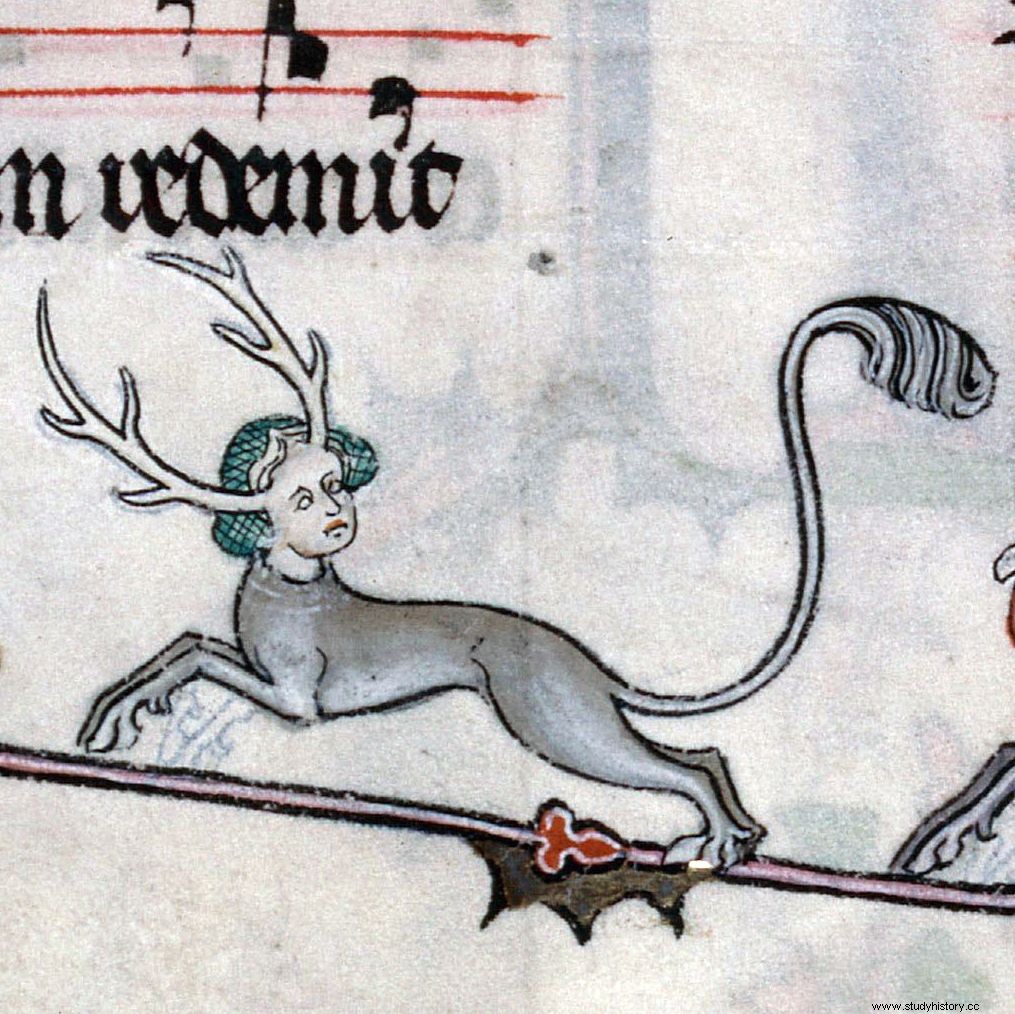
Being a stag in the Middle Ages could have different meanings. Renauda de Bar's breviary, France, c. 1302-1303.
The owner of the Breviary of Verdun was the bishop of Metz in the years 1302-1316. He probably received the book as a gift from relatives.
14. Funny cats
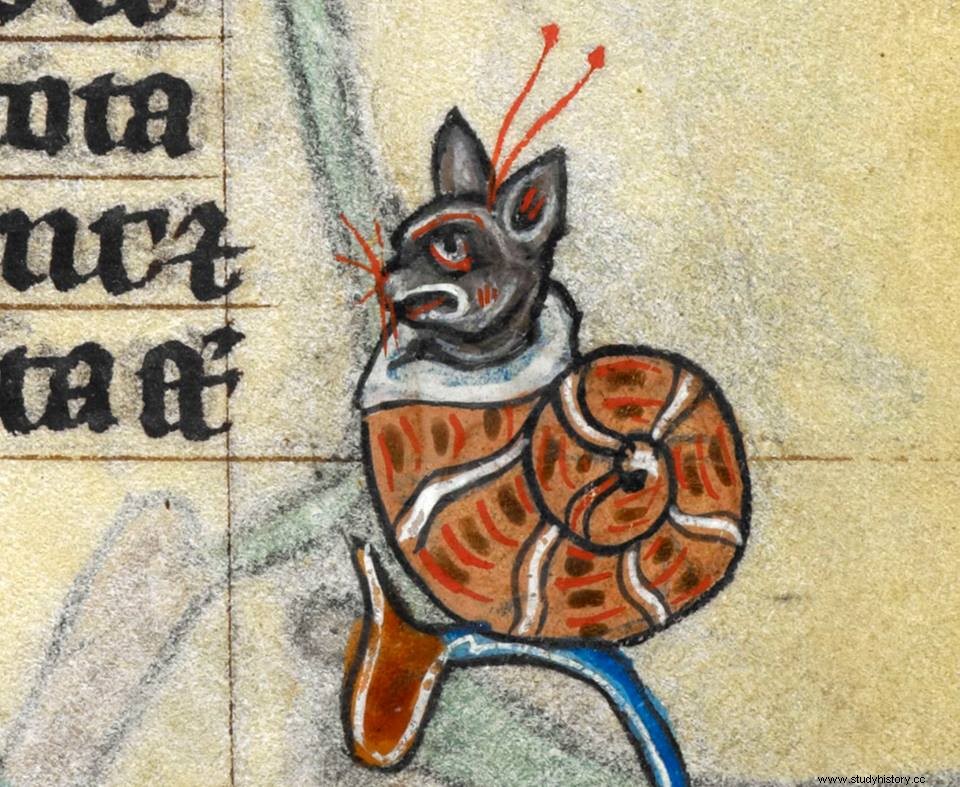
Sweetie in a snail shell. Book of hours from Maastricht, Netherlands (Liège), 14th century.
As the miniature above proves, "funny cats" also entertained people a thousand years ago. Purring charges often accompanied the copyists, protecting monastic libraries and granaries from rodents. No wonder they were often portrayed in the pages of books. Or on the margins ... hour book, as in this case.
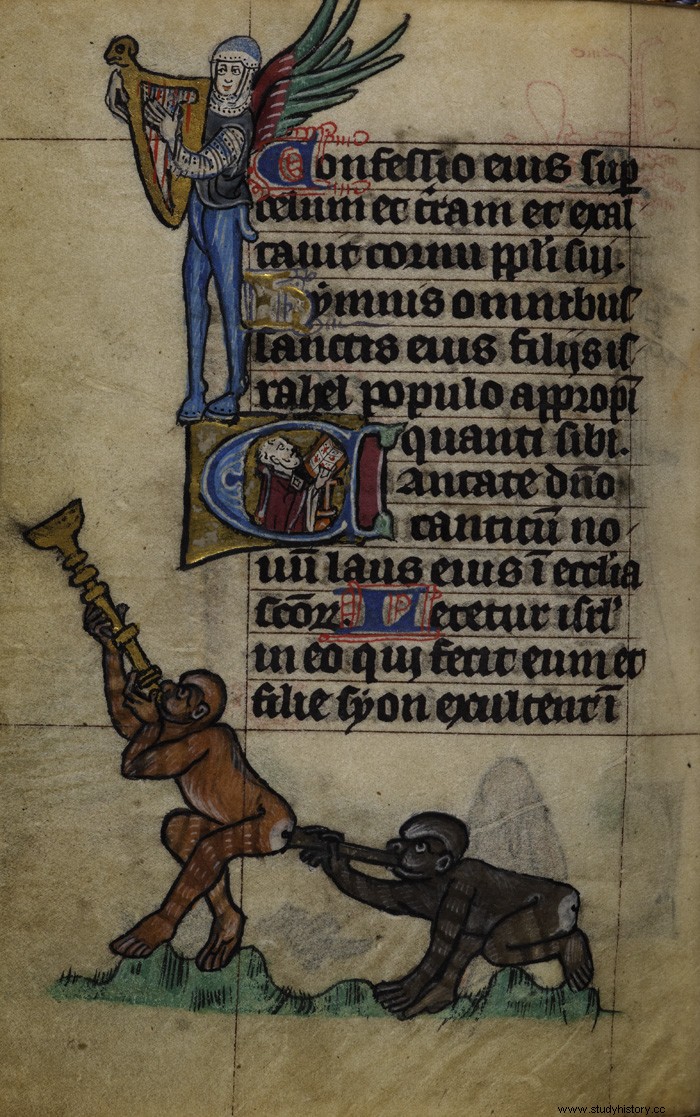
Music without limits. Book of hours from Maastricht, Netherlands (Liège), 14th century.
In the Maastricht prayer book you can find not only cats. It is also richly decorated with other animal motifs. However, the way of presenting these motives may be shocking for a modern audience. Especially if one takes into account the contrast between the content (prayers and psalms) and the graphics (example above).
13. The Millennial Comic
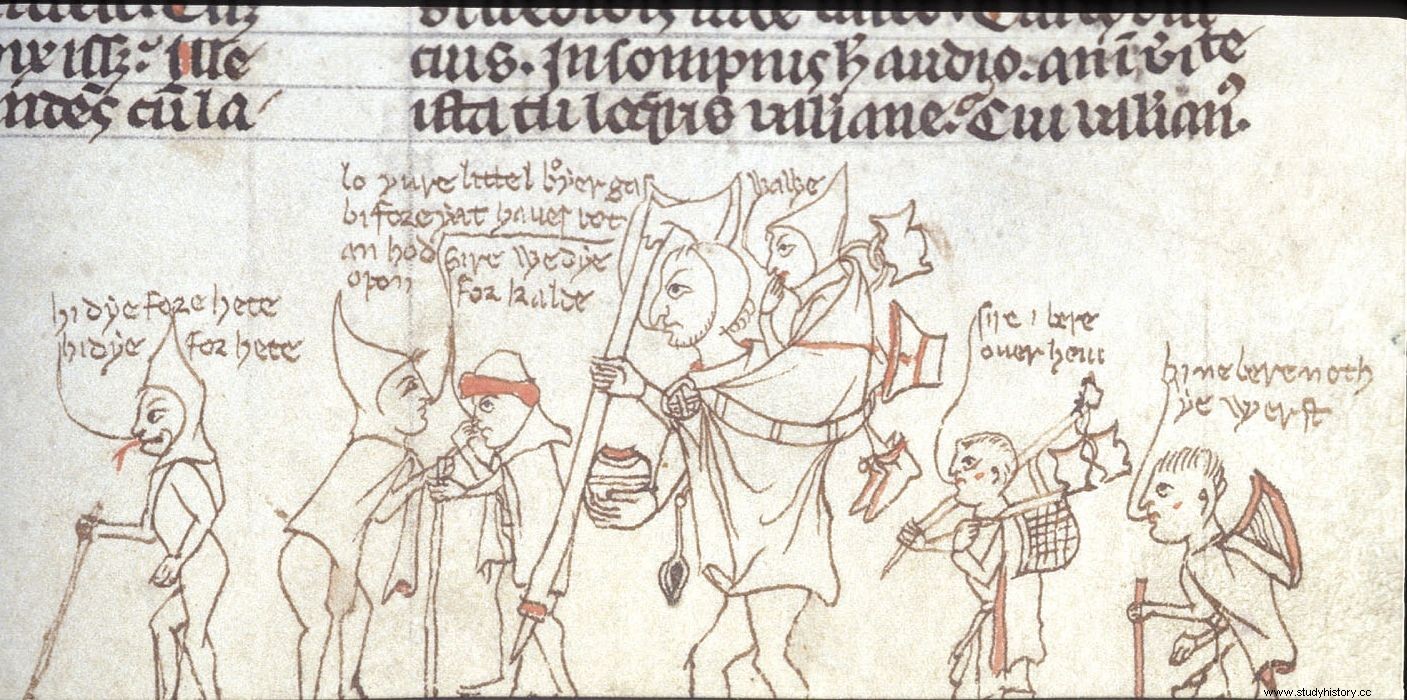
Traveling with children can be tiring, especially when you go on a pilgrimage on foot. Jakub de Voragine, "The Golden Legend", England, 13th / 14th century
Erik Kwakkel, a historian at Leiden University specializing in the study of medieval manuscripts, came across an unusual illustration during his research. It shows travelers talking in English. What makes a drawing unique? Assigning statements to individual characters with a line running from the mouth to the text, reminiscent of modern comic speech bubbles . In medieval art, the lines spoken by the heroes of the painting were usually placed on ribbons unfolding next to them, the so-called bands. According to the researchers, the drawing shows a father traveling with children complaining about the cold and the burdens being carried. The author wanted to create a funny genre scene. It turned out a little scary.
12. Come on, give me that soul
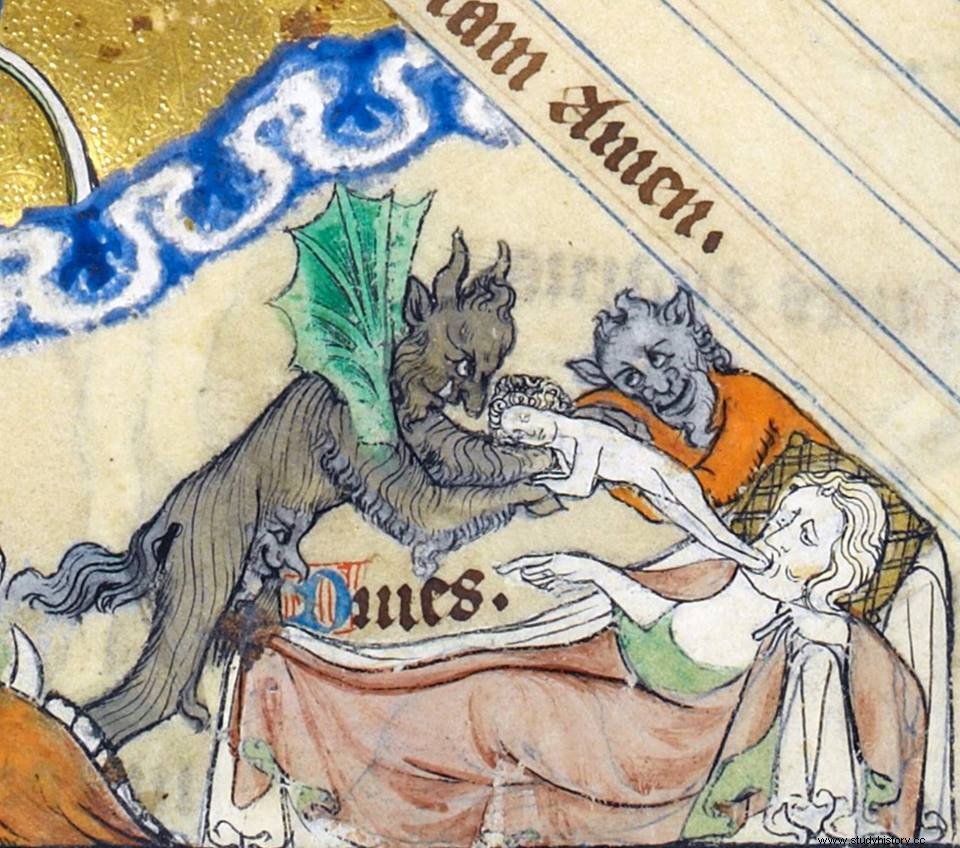
The devil also has a hard time ... The Psalter by Robert de Lisle, England, around 1310
This is not bizarre torture, unusual childbirth or grotesque therapy. The little man pulled from the mouth of a dying man is a visual representation of his soul . The above illustration is a fragment of a larger whole, showing the twelve truths of faith. On the opposite side of the rich sinner's bed, there is the body of a poor pilgrim, from whose soul angels drag out. Sinner or not, the representatives of the underworld do not have light work…
11. Great-grandmother of the Little Mermaid
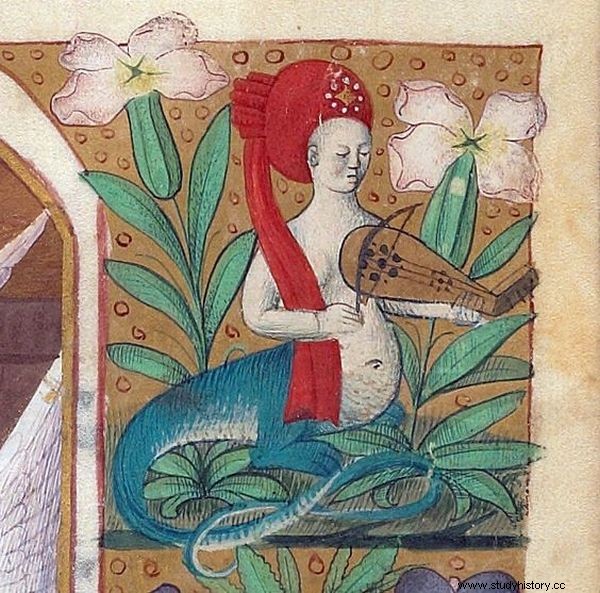
Every woman deserves peace on a Saturday afternoon. Hours, France, between 1450 and 1475, Beinecke Library collection.
The beautiful lady in the picture is Meluzyna, a figure that comes from an old legend. This story, popular in northwestern France, was first written at the end of the 14th century. According to her, the tempting sorceress gave rise to the famous Lusignan family. The story was this:one day while driving through the woods, Raymond of Poitou saw a beautiful girl - so pretty that he immediately offered her marriage. Meluzyna, because that was the name of beauty, agreed. However, she made one strange condition. Once a week, on Saturdays, Raymond was not allowed to enter her chamber. The happy spouse, of course, one day broke this prohibition and began to spy on his wife while bathing on Saturday. To his horror, he saw that from the waist down she was… a snake. The offended woman turned into a dragon and flew away, abandoning the curious bridegroom forever.
10. Pocket monks

Medieval Teletubbies from "Le Livre des hystoires du Mirouer du monde", France, 15th century.
Three colorful figures in ear-hats are a decorative element in the 15th-century manuscript "Le Livre des hystoires du Mirouer du monde". Among the floral ornaments richly adorning selected pages of the manuscript, there are many similarly absurd scenes and grotesque figures. Dwarfs in ridiculous hats occasionally sneak between the columns of the text, effectively distracting the reader from the content.
The researchers speculate that the book was intended to present universal stories and was intended for women. There are several copies of the manuscript. One of them, entitled "From the creation of the world to the birth of Christ" is in the collections of the Jagiellonian Library.
9. Demolition of the fourth wall
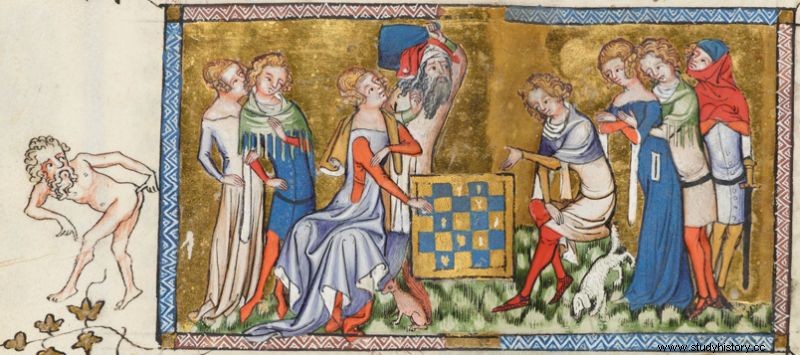
The gentleman on the left shows how much such a game is worth. Jacques de Longuyon, "Les Voeux des Paon", Belgium, around 1350
In fact, you might be wondering what the author meant by drawing a naked man making a vulgar gesture towards the figure on the right. Perhaps it is a graphic comment on the events taking place behind the frame of the miniature? Or a reference to the heroes' poor chess strategy? Or was the miniaturist just tired of serious work? One thing is for sure. Medieval illustrators did not play with subtlety .
8. Naughty monkey
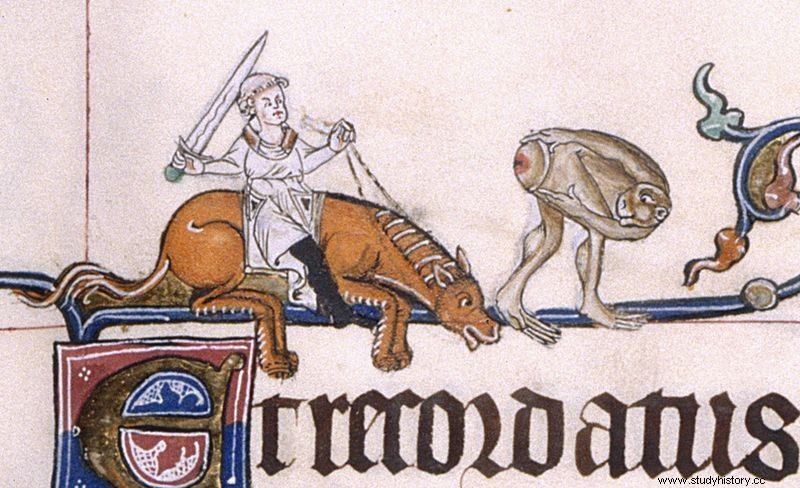
A true knight is not afraid of anything, not even monkey's buttocks. The Gorleston Psalter, circa 1310
The above illustration is another miniature work from the Gorleston Psalter. Neither the huge ape nor its anal display are anything but exceptional among the themes that pop up in the margins. The miniaturists seemed obsessed with anus. Similar illustrations appear extremely often. It seems that the audience was also interested in this type of scene.
7. Frog-eaters
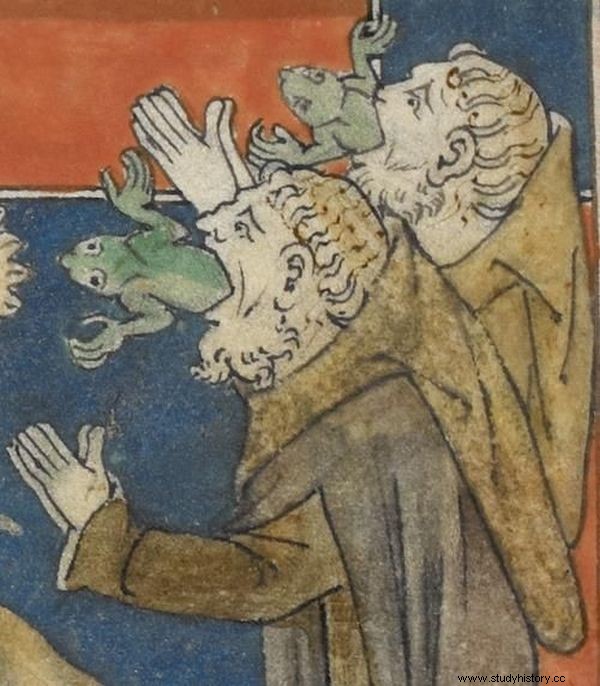
Frogs don't know what's going on either. The Apocalypse of Queen Mary, England, 14th century, British Library collection.
Keeping in mind the medieval tradition of depicting the soul coming out of the body through the mouth, one might think that the two monks in the picture are just taking their last breath. The truth, however, is even more terrifying. The frogs spit out by the monks symbolize the lies that come out of the mouths of false prophets. They are derived from the apocalyptic beasts depicted on the same page of the manuscript. The detail is included in the illustrated Apocalypse of St. John from the 14th century.
6. Like a knight, like a steed
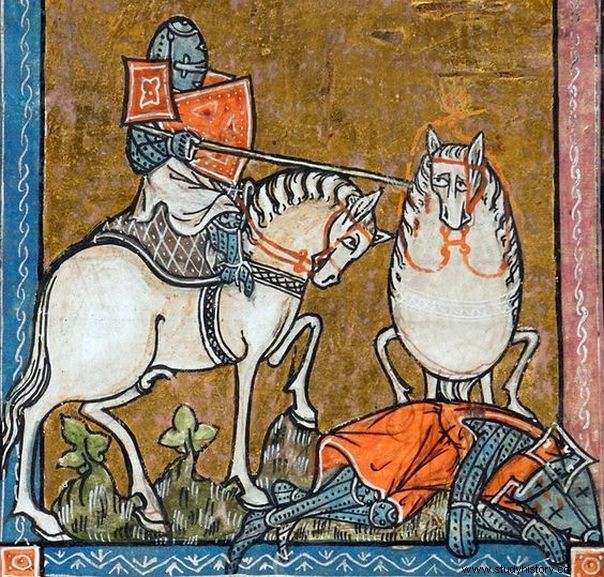
I wonder what the saddle looks like. "L'estoire de Merlin", France, circa 1316, British Library collection.
"L'estoire de Merlin", or the story of Merlin, contains stories known from the series of legends of "The Round Table" with illustrations depicting the history of the wizard and king Arthur. The picture above shows a dwarf winning over a knight. However, it is not the people who catch the eye the most. In the case of the sad horse pierced by a lance, the artist himself apparently defeated ... the perspective . In the history of art, the time of the masters of proportion was yet to come.
5. Naked truth
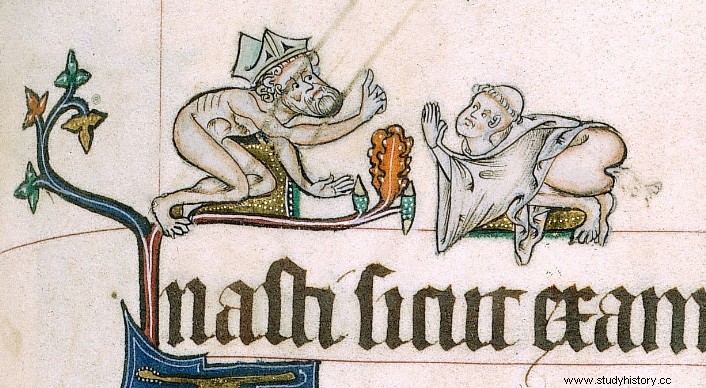
Shame on you, miniaturist. The Gorleston Psalter, circa 1310
Another proof of how eagerly cloaked humor was used in the Middle Ages. But while some read such illustrations in psalters, others severely condemned the unhealthy obsession. Bernard of Clairvaux added to the apology written to the Abbot of Saint-Thierry the question:"What can there be an excuse for these bizarre monstrosities?" The Church Doctor was concerned that readers of the manuscripts would spend their days not meditating on God's laws, but staring at grotesque illustrations. We suspect that this was a legitimate concern.
4. Plentiful Harvest
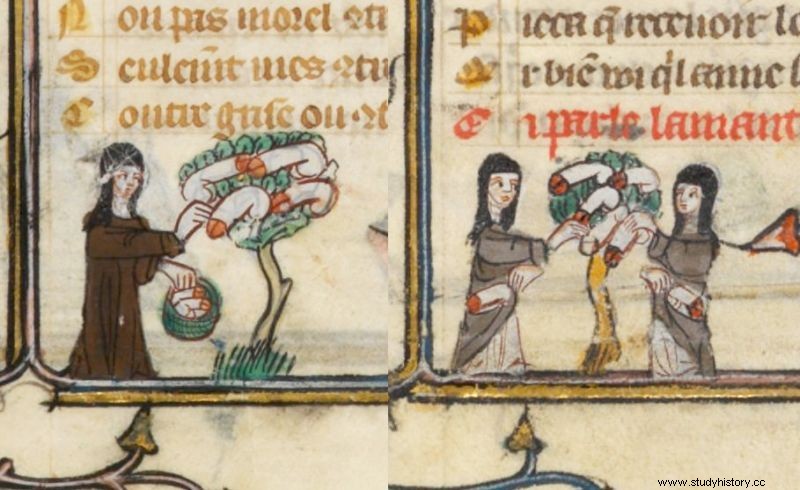
Have you ever wondered what was grown in medieval gardens? Guillaume de Lorris, Jean de Meun, "The Novel of the Rose", France, 14th century.
The controversial scene of the collections comes from a 14th-century copy of the famous allegorical poem "The Novel of the Rose" by Guillaume de Lorris and Jean de Meun. The manuscript was written in a Paris studio run by Richard and Jeanne de Montbaston. The couple made nineteen copies of the poem and decorated them with illustrations. After her husband's death in 1353, Jeanne ran the studio on her own, which allows researchers to assume that the erotic drawings in this copy are also her work. This time their presence is fully justified. The theme of carnal love is dealt with in the poem itself.
3. Meanwhile, at the antipodes
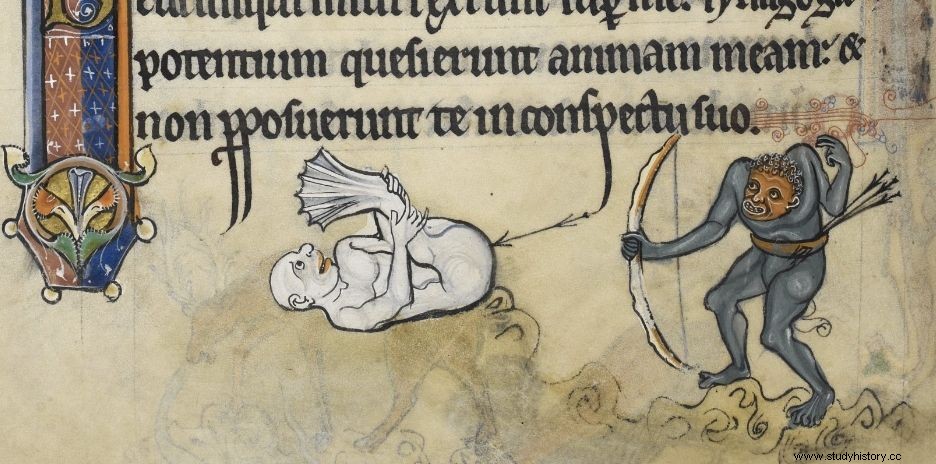
Yes, it is this book that the writer William Morris was amazed at. The Rutland Psalter, circa 1260
Bestiaries enjoyed great popularity in the Middle Ages. They were common in Europe, especially in the 13th century. They collected applications, legends and accounts of travelers to exotic lands, and were decorated with fanciful images of the described wonders. It was believed that in distant countries there were people who were completely unlike Europeans. For example, one-legged, without a neck and with a dog's head. In the imagination of people at that time, the conflicts on the other side of the ocean could have looked exactly like the picture above.
2. En garde!
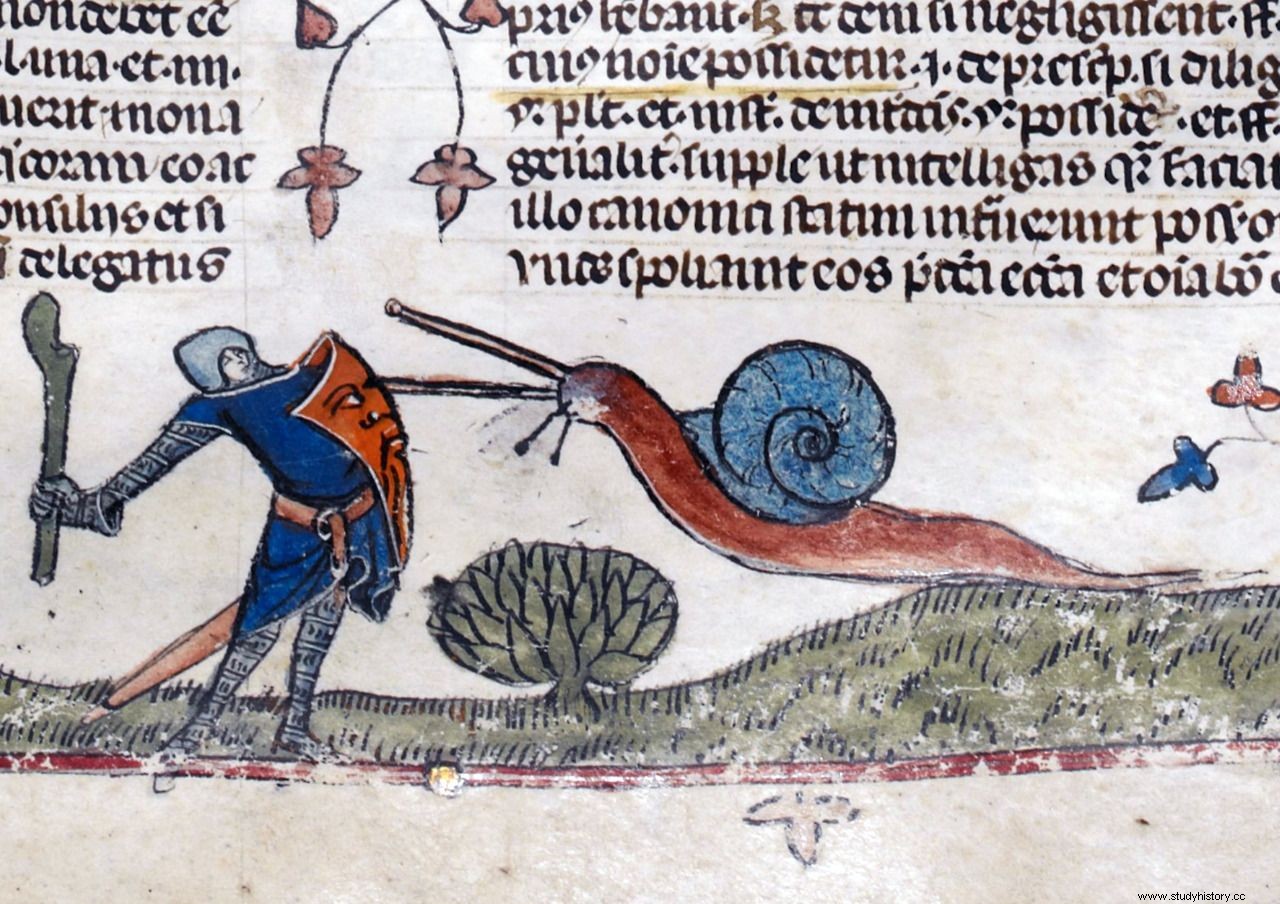
For such a snail only with a stick. The Smithfield Decretals, France, circa 1300, illuminations added in London circa 1340
The fight between a knight and a snail is not a bizarre fantasy of the author of the above illustration. This motif often appeared in the medieval margins. Researchers had various theories about its interpretation. Some have spoken of the snail as a symbol of the resurrection, as images of it have been found close to miniatures of the biblical Lazarus. Others saw him as representing the Lombards, accused of dishonorable conduct. I guess it's hard to say in this case that the truth lies in the middle.
1. Monty Python inspiration
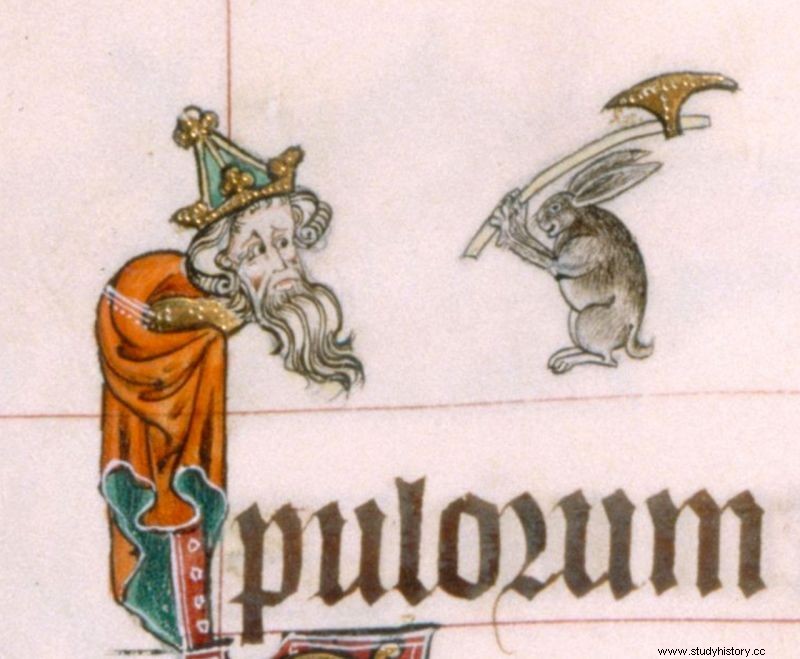
You can even be a king, there is no escape from a rabbit with an ax. The Gorleston Psalter, circa 1310
You wouldn't want to meet these rabbits in a clearing. We have already explained the presence of the long-eared beasts in the pages of the Gorleston Psalter. It's about the name of the owner - John de Warenne. But even their presentation in the pages of other manuscripts, such as in the Smithfield Decretals, is puzzling.
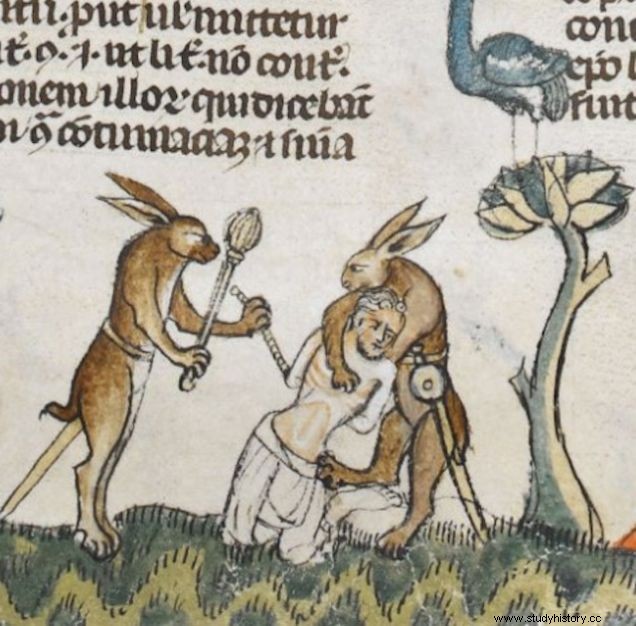
Come on, let's hunt a man. "Smithfield Decrees", France, 13th / 14th century
Why were rabbits feared in the Middle Ages? Do - as in the case of snails - do they symbolize any group of people? Or maybe such scenes are the implementation of the theme of "the world upside down", depicting inverted social roles and animals changing places with people ? Or is it just a humorous theme that has become popular with miniaturists? This is another thousand-year-old mystery waiting to be solved.
***
You will discover other surprising faces of medieval culture in the book "The Great Fire" by Jeanne Bourin.
